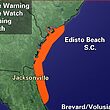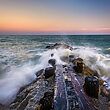While many people associate hurricanes with the summer season alone, there is still a threat during the early months of fall.
The peak hurricane season for the Atlantic Basin (which contains the Atlantic Ocean, Caribbean Sea and Gulf of Mexico) occurs from July to September. However, according to the National Weather Service, some of the deadliest and most intense storms in recent history have occurred outside of the season’s peak.
Hurricane Wilma was one of the strongest storms on record while spinning off the coast before making landfall in Florida on Oct. 24, 2005 as a category three storm. However, even with the decrease in intensity, the weakened storm system still caused intense damage to the Floridian sugar industry and generated billions in damage.
Hurricane Mitch, which tore through the Caribbean and Central America before hitting Florida in 1998, was one of the deadliest and intense storms in history. It left more than 10,000 people dead and another 10,000 missing and caused billions of dollars of damage.
Many people watch the forecast on the news and breathe a sigh of relief when the path of hurricanes and tropical storms look to be headed far away from Edisto. But while Edisto Island has yet to hit hard by a hurricane, there is still always a chance that a storm could make landfall in the area.
According to one hurricane-related website, the longest gap between storms to hit Charleston and area beaches was 12 years and occurred between 1928 and 1940. The site stated that the area is affected by a hurricane or tropical storm every 3 years and experiences hurricane-force winds for at least four hours every 10 years.
That’s why it is important to keep track of happenings in the tropics throughout the entirety of hurricane season. Granted, there is nothing anyone can do to stop a hurricane from coming, but knowing what’s happening out in the water far beyond what can be seen with the naked eye is good to know.
For instance, earlier this week, the beach experienced a higher-than-average high tide and waves were crashing up over the parking lot at the Pavilion and flooding the nearby portion of Palmetto Boulevard. This could have been caused by the lunar phase known as the new moon or been related to the tropical storm hundreds of miles off the coast or just something that happened. One thing is for certain, it definitely goes to show how powerful the ocean is.






